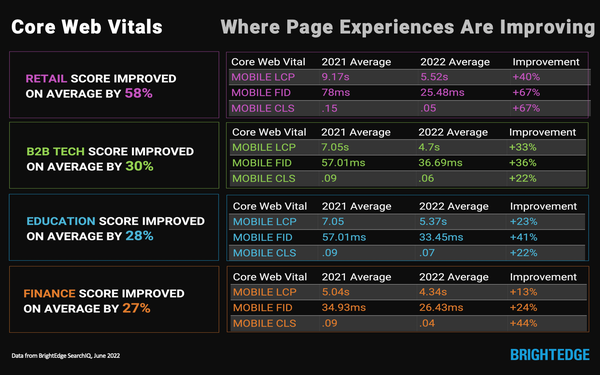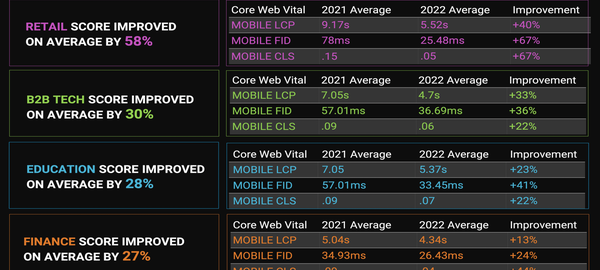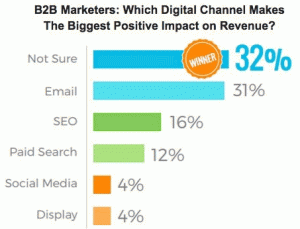Google Core Web Vitals: Data Shows Retail And Ecommerce Improved

BrightEdge analyzed how marketers curate experiences for consumers nine months after Google’s rollout of Core Web Vitals, a performance-focused measurement for websites. Google made the update in September 2021.
The top performers for page-load times are less than 2.5 seconds, said Jim Yu, CEO at BrightEdge. “The first input delay, less than 100 milliseconds,” he said. “And the cumulative layout shift, less than 2.1 milliseconds.”
The series of metrics that Google analyzes to determine a webpage experience correlate with better rankings in search results.
The metrics and data enable the engine’s technology to understand the speed at which the content serves on a webpage, which has become complex in terms of the performance and optimization of web pages and content.
“It’s the vital signals of the web experience companies deliver,” Yu said. “It sounds simple, but how quickly does the first piece of content appear on the browser. It’s that data that helps Google understand the experience.”
The metrics range from the first piece loading on a page to how quickly the content shifts each time another element is added to the page. This is known as the image cumulative layout shift and it measures the amount of time until a user can interact with the web page.
And while the vitals or metrics improve the user experience, they also clearly identify the best-performing companies.
BrightEdge also wanted to provide guidance on four industries. The first time the company ran this report in 2021, it found that many in the industries that performed well did not do a “great job.” This time, things are different.
Retail, for example, seemed “pretty challenged” to implement and use Core Web Vitals, but Financial Services did “reasonably well,” followed by B2B and Education. Now, the data shows something different. Retail made an improvement this year. More review pages are performing better and improved Core Vital Scores. Many have larger and more complex sites.
“We were surprised to see that Core Web Vitals across the board improved for the top performers,” he said. “Most of the larger sites winning share of voice have made improvements in performance. In retail, metrics like delay were cut in half, and second tier sites we saw gains in higher education. They boosted performance and Core Web Vitals.”
Newer sites like HigherEdJobs.com were present this year that the data did not pick up the last time BrightEdge ran the data. More .gov sites also did better.
By running the updated in SearchIQ, BrightEdge can identify many trends important for marketers. The data tells marketers optimization for search how the industry continues to change and where to make investments to improve the page experience for site visitors to perform well on Google.
In the Financial Services Category, the most challenged were banking and mortgage brokers. Mortgage Brokers showed the most improvement this year.
BrightEdge SearchIQ tries to determine what will impact the user and performance. The technology also identified a higher presence for B2B technology resources like Tech Target, and decrease in job sites like Indeed. Last year, BrightEdge saw that the app store links for productivity tools occupied higher growth. Publishers and resources from the software as a service platform also grew.
(29)
Report Post






